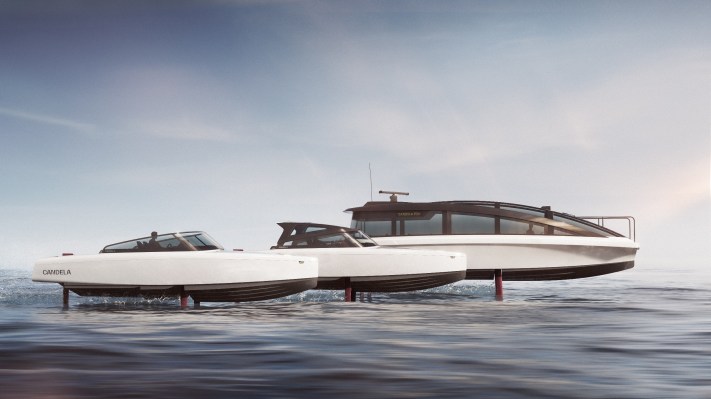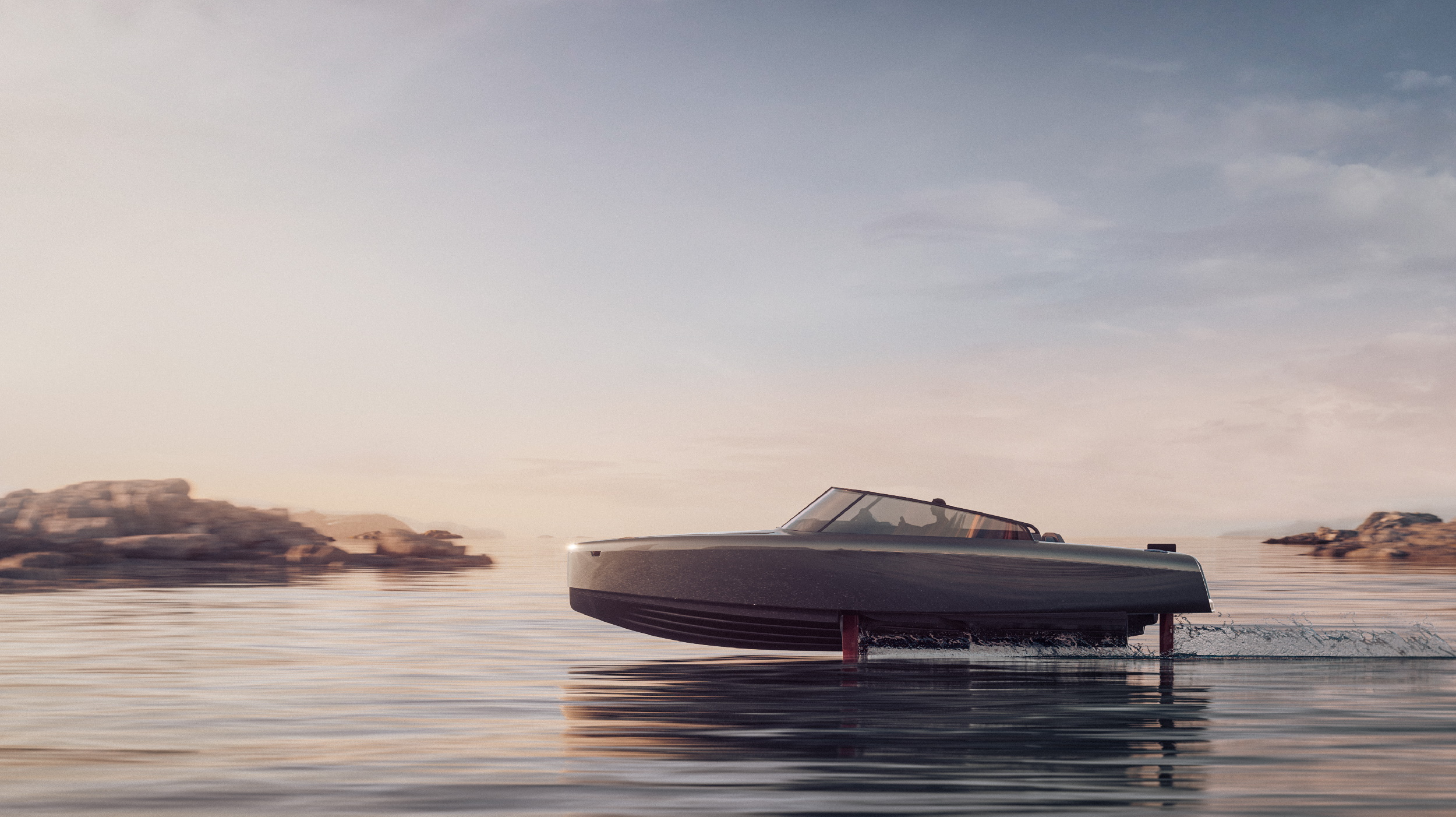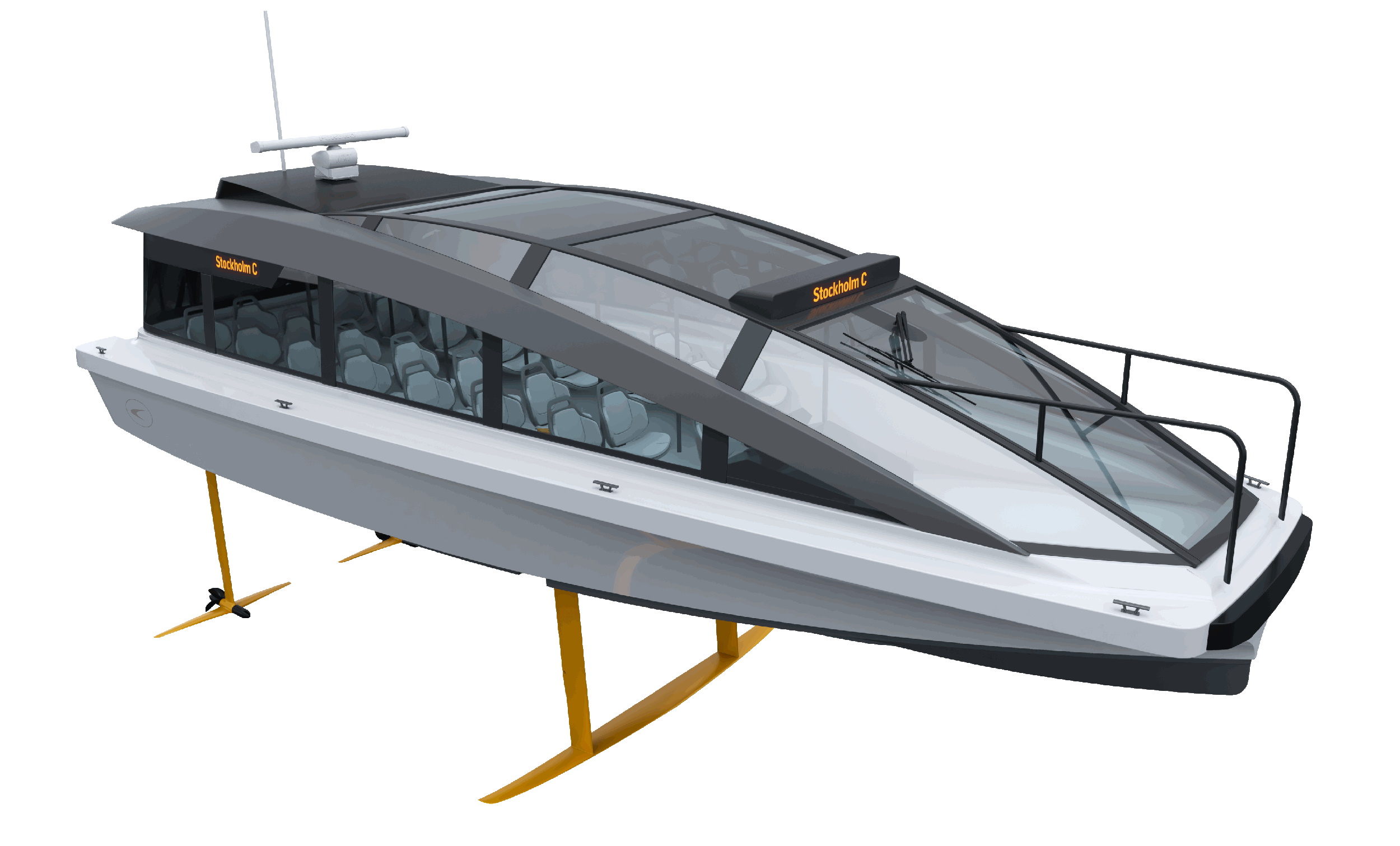Candela makes an unusual style of watercraft called a hydrofoiling boat, which glides above the sea on fins for a smoother, more efficient ride — doubly unusual, in fact, in that it is electrically propelled. The company has raised $24 million to accelerate production of its existing small craft and a larger commercial one, in pursuit of cleaner and generally more future-proof waters.
The principle on which these boats work is actually fairly easy to understand. As a boat moves through the water, it tends to propel itself upwards and out as well as forward, and in a traditional watercraft — especially in choppy seas — this leads to the boat bouncing up and down on the water as it goes.
Hydrofoiling watercraft rise up too, but unlike a normal keeled boat the craft has a set of strong, bladelike fins attached to the powertrain and a horizontal fin below. At cruising speed the boat rises up on these fins so that they are the only things under the water, reducing drag and chop considerably and correspondingly increasing the efficiency of the engine.
Of course there are consequences to having your boat standing on its fins like that, not least of which is it looks a little strange (boaters are very conscious of these things). But practically speaking, the main issue is probably that turning tends to… well, flop the boat over on its side due to the abnormally high center of gravity. Fortunately this potentially dangerous tendency is handled preemptively in Candela boats.
“When you turn left in a Candela, it will lean left, and you will be pushed down in your seat, not to the side as in a planing boat. This coordinated turn is performed by the on board software, which regulates the angle of attack of the foil 100 times per second. So the foil moves constantly, in real time, to balance the boat,” explained a company representative in response to my question. Although he compared it to a fighter jet, it might be easier to think of an all-wheel-drive system constantly monitoring for slip and anticipating such factors during a car’s turns.
Solving this problem makes hydrofoiling craft a viable alternative to a traditional hull, and that in turn solves one of the problems inherent to electric watercraft: low range. Watercraft face incredible resistance from the medium through which they travel, and at speed even the best batteries out there will run out much sooner than a gas tank.
Painstakingly designing the entire boat around the engine and shaving every gram off the weight, as Zin Boats does, is one approach to making those battery packs last, but if you can increase efficiency by half with something like hydrofoiling, you outrange any other boat in the same class almost without trying.
These boats do actually exist, though only a handful of them at present. Candela started out with the prototype C-7 speedboat, and made several upgrades with the larger C-8, currently in pre-production with the first boat about 80% done and delivery of the first run scheduled for spring. Before you get out your piggy bank, let’s be clear here: This craft is aimed squarely at the ultra-rich, with a €290,000 price tag before you start adding options like a hard top.
But while the company does hope to sell as many of these as possible to the Monaco and Dubai crowd, the bigger opportunity may be in public transport, of all things. Ferries are crucial infrastructure to cities around the world, but are often old, diesel-powered things that pollute the air and water around them. Candela is aiming at replacing those with its 30-passenger P-30.
The company plans to debut the P-30 in Stockholm in 2023, where they hope it will operate for 40% cheaper, get around faster, quieter, and without making waves. They even plan to make it autonomous at some point, though we’ll address that ambition when it’s actually being attempted. With a predicted 60 mile range per charge, the P-30 should be able to make multiple trips without stopping and plug in to a fast charger at terminals without too much disruption.
Replacing commercial ferry and water taxi fleets with clean-running alternatives could be a huge step toward improving local water quality and cutting down on municipal contributions to pollution. Many coastal and bay cities could use something like this and may be willing to pay a premium to be recouped in lower running costs and general goodwill.
The $24 million round was led by EQT Ventures, with participation from TED curator Chris Anderson. The money will be used to expand the R&D team and scale up production with automated tools.
“We’ve shown that our hydrofoil tech is the key to make electric boats commercially viable. We’re seeing boundless demand for the Candela C-8, as well as huge interest in our commercial vessels,” said Candela CEO Gustav Hasselskog in a press release. “The investment from EQT Ventures will allow us to double down on our mission to speed up the transition to fossil fuel-free lakes and oceans. It took us four years to develop the technology and two more years to master it. Now we are ready to scale up fast.”
It’s all still toys for the filthy rich, but at one point so were electric cars. A few more years and electric boats may be as affordable as traditional ones — which is to say, not very, but considerably less than a house. If it ends up helping keep our waterways, lakes and oceans cleaner, though, I’m all for it.


